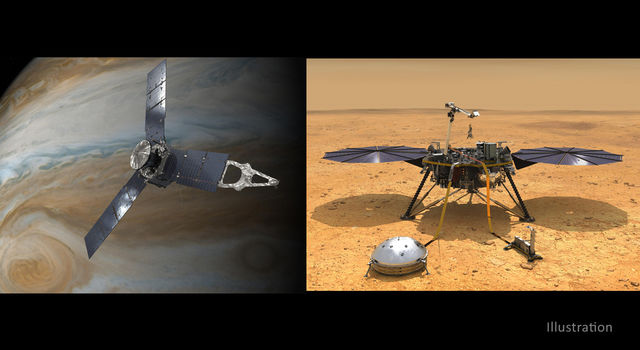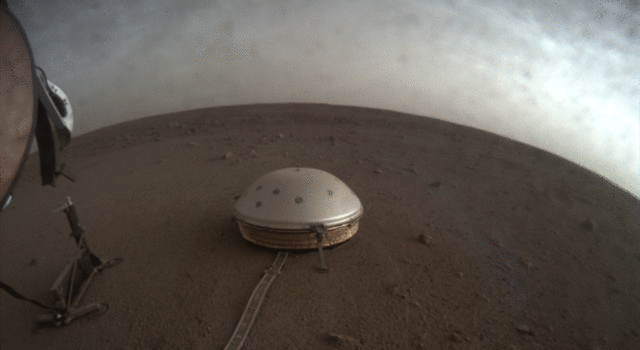Blogs | Dawn Journal | April 29, 2016
New Dimensions and More Discoveries Lie Ahead for Dawn
Dear Glutdawnous Readers,
The distant dwarf planet that Dawn is circling is full of mystery and yet growing ever more familiar.
Ceres, which only last year was hardly more than a fuzzy blob against the stars, is now a richly detailed world, and our portrait grows more elaborate every day. Having greatly surpassed all of its original objectives, the reliable explorer is gathering still more data from its unique vantage point. Everyone who hungers for new knowledge about the cosmos or for bold adventures far from Earth can share in the sumptuous feast Dawn has been serving.
One of the major objectives of the mission was to photograph 80 percent of Ceres' vast landscape with a resolution of 660 feet (200 meters) per pixel. That would provide 150 times the clarity of the powerful Hubble Space Telescope. Dawn has now photographed 99.8 percent with a resolution of 120 feet (35 meters) per pixel.
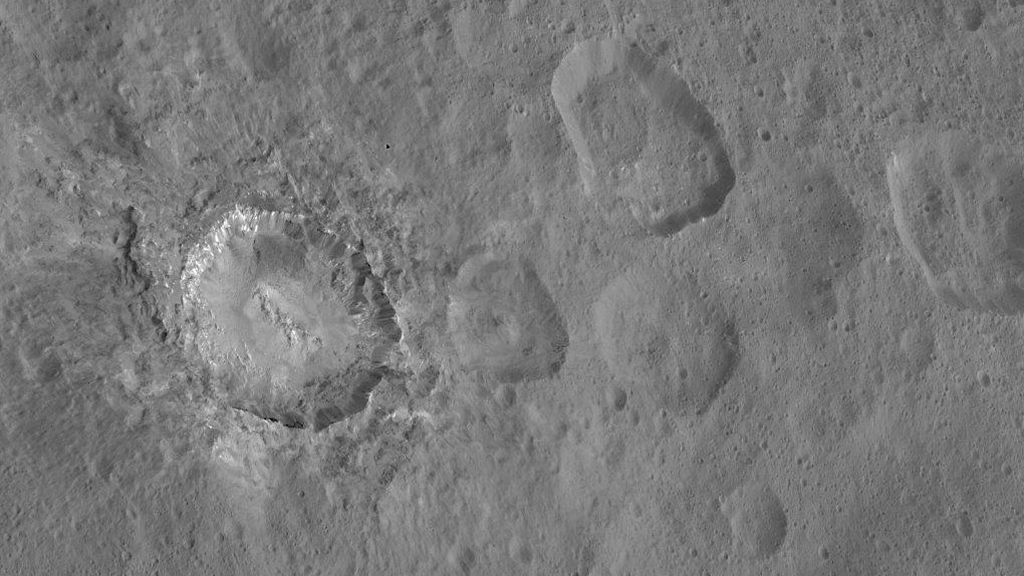
This example of Dawn's extraordinary productivity may appear to be the limit of what it could achieve. After all, the spaceship is orbiting at an altitude of only 240 miles (385 kilometers), closer to the ground than the International Space Station is to Earth, and it will never go lower for more pictures. But it is already doing more.
Since April 11, instead of photographing the scenery directly beneath it, Dawn has been aiming its camera to the left and forward as it orbits and Ceres rotates. By May 25, it will have mapped most of the globe from that angle. Then it will start all over once more, looking instead to the right and forward from May 27 through July 10. The different perspectives on the terrain make stereo views, which scientists can combine to bring out the full three dimensionality of the alien world. Dawn already accomplished this in its third mapping orbit from four times its current altitude, but now that it is seeing the sights from so much lower, the new topographical map will be even more accurate.
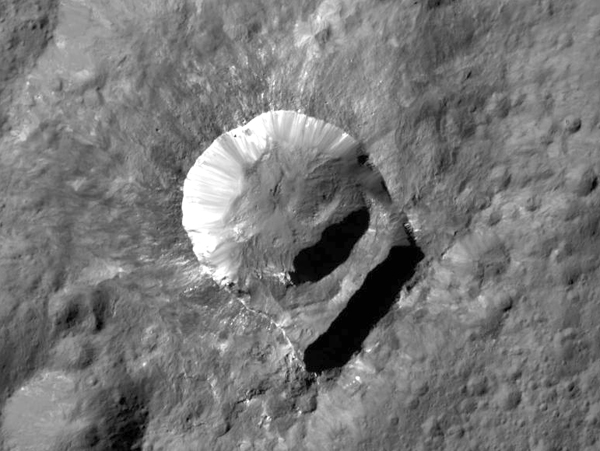
Dawn is also earning extra credit on its assignment to measure the energy of gamma rays and neutrons. We have discussed before how the gamma ray and neutron detector (GRaND) can reveal the atomic composition down to about a yard (meter) underground, and last month we saw initial findings about the distribution of hydrogen. However, Ceres' nuclear glow is very faint. Scientists already have three times as much GRaND data from this low altitude as they had required, and both spectrometers in the instrument will continue to collect data. In effect, Dawn is achieving a longer exposure, making its nuclear picture of Ceres brighter and sharper.
In December we explained how using the radio signal to track the probe's movements allows scientists to chart the gravity field and thereby learn about the interior of Ceres, revealing regions of higher and lower density. Once again, Dawn performed even better than expected and achieved the mission's planned accuracy in the third mapping orbit. Because the strength of the dwarf planet's gravitational tug depends on the distance, even finer measurements of how it varies from location to location are possible in this final orbit. Thanks to the continued smooth operation of the mission, scientists now have a gravitational map fully twice as accurate as they had anticipated. With additional measurements, they may be able to squeeze out a little more detail, perhaps improving it by another 20 percent before reaching the method's limit.
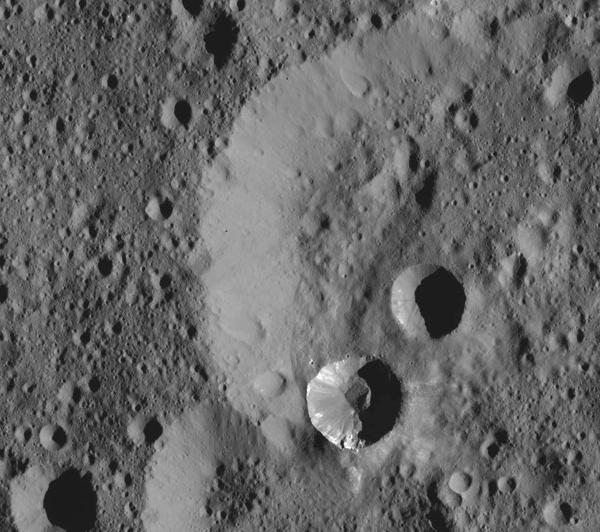
Dawn has dramatically overachieved in acquiring spectra at both visible and infrared wavelengths. We have previously delved into how these measurements reveal the minerals on the ground and what some of the interesting discoveries are. Having already acquired more than seven times as many visible spectra and 21 times as many infrared spectra as originally called for, the spacecraft is adding to its riches with additional measurements. We saw in January that VIR has such a narrow view that it will never see all of Ceres from this close, so it is programmed to observe features that have caught scientists' interest based on the broad coverage from higher altitudes.
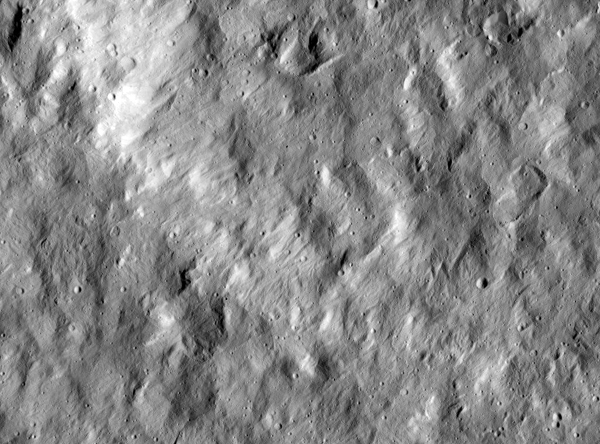
Dawn's remarkable success at Ceres was not a foregone conclusion. Of course, the flight team has confronted the familiar challenges people encounter every day in the normal routine of piloting an ion-propelled spaceship on a multibillion-mile (multibillion-kilometer) interplanetary journey to orbit and explore two uncharted worlds. But the mission was further complicated by the loss of two of the spacecraft's four reaction wheels, as we have recounted before. (In full disclosure, the devices aren’t actually lost. We know precisely where they are. But given that one stopped functioning in 2010 and the other in 2012, they might as well be elsewhere in the universe; they don’t do Dawn any good.) Without three of these units to control its orientation in space, the robot has relied on its limited supply of hydrazine, which was not intended to serve this function. But the mission's careful stewardship of the precious propellant has continued to exceed even the optimistic predictions, allowing Dawn good prospects for carrying on its fruitful work. In an upcoming Dawn Journal, we will discuss how the last of the dwindling supply of hydrazine may be used for further discoveries.
In the meantime, Dawn is continuing its intensive campaign to reveal the dwarf planet's secrets, and as it does so, it is passing several milestones. The adventurer has now been held in Ceres' tender but firm gravitational embrace longer than it was in orbit around Vesta. (Dawn is the only spacecraft ever to orbit two extraterrestrial destinations, and its mission would have been impossible without ion propulsion.) The spacecraft provided us with about 31,000 pictures of Vesta, and it has now acquired the same number of Ceres.
For an interplanetary traveler, terrestrial days have little meaning. They are merely a memory of how long a faraway planet takes to turn on its axis. Dawn left that planet long ago, and as one of Earth's ambassadors to the cosmos, it is an inhabitant of deep space. But for those who keep track of its progress yet are still tied to Earth, on May 3 the journey will be pi thousand days long. (And for our nerdier friends and selves, it will be shortly after 6:47 p.m. PDT.)
By any measure, Dawn has already accomplished an extraordinary mission, and there is more to look forward to as its ambitious expedition continues.
Dawn is 240 miles (385 kilometers) from Ceres. It is also 3.73 AU (346 million miles, or 558 million kilometers) from Earth, or 1,455 times as far as the moon and 3.70 times as far as the sun today. Radio signals, traveling at the universal limit of the speed of light, take one hour and two minutes to make the round trip.
TAGS:CERES, DAWN, MISSION, SPACECRAFT, VESTA, DWARF PLANET





